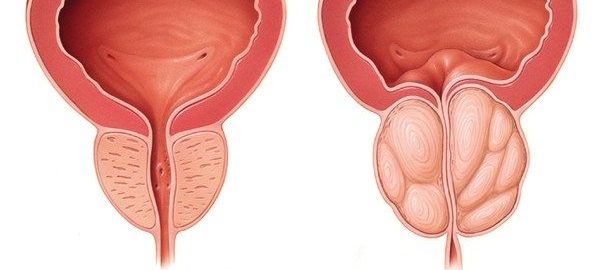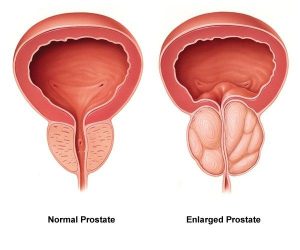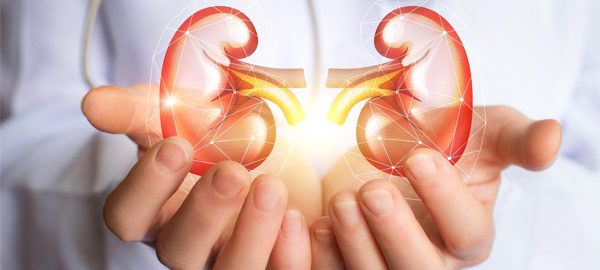Kidney
The kidneys are organs that are part of the urinary tract. They ensure the filtration of blood by eliminating waste by the production of urine. They also maintain the body’s water and mineral content.
Anatomy of the kidneys
The nothings, two in number, are located in the back part of the abdomen at the last two ribs, on each side of the spine. The right kidney, located under the liver, is a little lower than the left, which lies below the spleen.
Each kidney, shaped like a bean, measures on average 12 cm long, 6 cm wide and 3 cm thick. They are surmounted by an adrenal gland, organ belonging to the endocrine system and not involved in the urinary function. They are each surrounded by an outer protective envelope, the fibrous capsule.
The inside of the kidneys is divided into three parts (from the outside to the inside):
- The cortex, the outermost part. Pale color and about 1 cm thick, it covers the medulla.
- The medulla, in the center, is reddish brown. It contains millions of filtration units, the nephrons. These structures are equipped with a glomerulus, a small sphere where the filtration of the blood and the elaboration of the urine take place. They also consist of tubules directly involved in the modification of the composition of the urine.
- The chalices and the pelvis are collector cavities of urine. The calyxes receive urine from the nephrons which are then dumped into the pelvis. The urine then flows through the ureters to the bladder, where it will be stored before being evacuated.
The inner edge of the kidneys is marked by a notch, the renal hilum where the blood vessels and renal nerves and the ureters end. “Used” blood reaches the kidneys through the renal artery, which is an offshoot of the abdominal aorta. This renal artery then divides inside the kidney. The resulting blood is delivered to the inferior vena cava through the renal vein. The kidneys receive 1.2 liters of blood per minute, which is about a quarter of the total blood volume.
In the case of pathologies, only one kidney can fulfill the renal functions.
Physiology of the kidneys
The kidneys have four major functions:
- The development of urine from the filtration of blood. When the blood reaches the kidneys through the renal artery, it passes through the nephrons where it is freed of certain substances. Waste (urea, uric acid or creatinine, and drug residues) and excess elements are eliminated in the urine. At the same time, this filtration makes it possible to control the water and ion content (sodium, potassium, calcium, etc.) of the blood and to keep it in equilibrium. In 24 hours, 150 to 180 liters of blood plasma is filtered to produce about 1 liter to 1.8 liters of urine. The urine is ultimately composed of water and solutes (sodium, potassium, urea, creatinine …). Certain substances are not present in a healthy patient in the urine (glucose, proteins, red blood cells, white blood cells, bile).
- The secretion of renin, an enzyme that participates in the regulation of blood pressure.
- The secretion of erythropoietin (EPO), a hormone that stimulates the formation of red blood cells in the bone marrow.
- The transformation of vitamin D into its active form.
Diseases and diseases of the kidneys
Kidney stones (renal lithiasis): commonly known as “kidney stones“, they are hard crystals that form in the kidneys and can cause severe pain. In nearly 90% of cases, urinary stones from inside a kidney. Their size is very variable, ranging from a few millimeters to several centimeters in diameter. A calculus formed in the kidney and in transit to the bladder can easily block a ureter and cause severe pain. This is called renal colic.
Malformations:
Renal malrotation: Congenital abnormality that can affect only one kidney or both. During embryonic development, the kidney rises along the column to its final location and rotates. In the case of this pathology, the rotation is not done correctly. As a result, the pelvis, normally located on the inner edge of nothing, is found on its anterior face. The abnormality being benign, the renal function is intact.
Renal duplication: rare congenital anomaly, it corresponds to the presence of an extra kidney on one side of the body. This kidney is independent, with its own vascularization and it’s own a ureter that leads directly to the bladder or joins the ureter of the kidney on the same side.
Hydronephrosis: it is a dilation of the calices and the pelvis. This increase in the volume of these cavities is due to a narrowing or obstruction of the ureter (malformation, lithiasis …) that prevents urine from flowing.
Horseshoe kidney: malformation resulting from the union of the two kidneys, usually by their lower pole. This kidney is located lower than the normal kidneys and the ureters are not affected. This condition has no pathological consequence, it is usually highlighted by chance during a radiological examination.
Anomaly of renal function:
Acute and chronic renal failure: Gradual and irreversible deterioration of the kidneys’ ability to filter blood and excrete certain hormones. The products of metabolism and the excess water pass less and less into the urine and accumulate in the body. Chronic kidney failure results from complications of diabetes, hypertension or other diseases. Acute renal failure, on the other hand, occurs suddenly. It often occurs as a result of a reversible decrease in renal blood flow (dehydration, severe infection). Patients may benefit from hemodialysis using an artificial kidney.
Glomerulonephritis: inflammation or lesions of kidney glomeruli. The filtration of blood does not work properly, proteins and red blood cells are then found in the urine. Primary glomerulonephritis (only unaffected) is distinguished from secondary glomerulonephritis (a consequence of another disease). Generally, of unknown cause, it has been demonstrated that glomerulonephritis may, for example, appear following an infection, the taking of certain drugs (eg non-steroidal anti-inflammatory drugs such as ibuprofen) or a genetic predisposition.
infections
Pyelonephritis: infection of the kidneys by a bacterium. In most cases, it is Escherichia Coli, responsible for 75 to 90% of cystitis (urinary tract infection), which proliferates in the bladder and rises to the kidneys through the ureters. Women, especially pregnant women, are the most at risk. The symptoms are the same as for cystitis associated with fever and pain in the lower back. Treatment is by taking antibiotics.
Benign tumors
Cyst: A renal cyst is a pocket of fluid that forms in the kidneys. The most common are simple (or solitary) cysts. They cause no complications or symptoms. The vast majority is not cancerous, but some can disrupt the functioning of the organ and cause pain.
Polycystic disease: an inherited disease characterized by the development of a multitude of renal cysts. This condition can lead to increased blood pressure and kidney failure.
Malignant neoplasms
Kidney cancer: It accounts for about 3% of cancers and affects twice as many men as women. Cancer appears when certain kidney cells transform, multiply in an exaggerated and uncontrolled way and form a malignant tumor. In the majority of cases, kidney cancer is detected incidentally during an abdominal examination.
Treatments and kidney prevention
Prevention. Protecting your kidneys is essential. Although it is impossible to completely prevent certain diseases, healthy lifestyle habits can nevertheless reduce the risks. In general, well hydrated (at least 2 liters per day) and control its salt intake (through diet and sports) are beneficial for kidney function.
Other more specific measures are recommended to reduce the risks or prevent recurrence of kidney stones.
In the case of kidney failure, the two main causes are diabetes (type 1 and 2) as well as high blood pressure. Good control of these diseases greatly reduces the risk of progression to a case of insufficiency. Other behaviors, such as avoiding alcohol, drug, and drug abuse, can keep the disease away.
Kidney cancer. The main risk factors are smoking, overweight or obesity, and non-dialysis treatment for more than three years. These conditions can promote the development of cancer.
Examinations of the kidneys
Laboratory tests: the determination of certain substances in the blood and urine allow evaluation of renal function. This is the case, for example, for creatinine, urea, and proteins. In the case of pyelonephritis, a cytobacteriological examination of the urine (ECBU) is prescribed to determine the germs involved in the infection and thus adapt the treatment.
Biopsy: an examination that involves taking a sample of the kidney with a needle. The removed piece is examined microscopically and/or biochemically for cancer.
imagery
Ultrasound: an imaging technique that relies on the use of ultrasound to visualize the internal structure of an organ. The ultrasound of the urinary system allows visualizing the kidneys but also the ureters and the bladder. It is used to highlight, among other things, renal malformation, insufficiency, pyelonephritis (associated with ECBU) or renal calculus.
MRI (Magnetic Resonance Imaging): a diagnostic medical examination performed using a large cylindrical device in which a magnetic field and radio waves are produced. It provides very accurate images in all dimensions of the urinary tract in the case of an MRI of the abdominopelvic area. It is especially used to characterize a tumor or to make a diagnosis of cancer.
Intravenous Urography: A radiological examination that visualizes the entire urinary tract (kidneys, bladder, ureters, and urethra) after injecting an opaque X-ray product that concentrates in the urine. This technique can be used especially in cases of lithiasis or to compare the functioning of the kidneys.
Renal scintigraphy: This is an imaging technique that involves administering to the patient a radioactive tracer, which spreads in the kidneys. This test is used to measure the renal function of the kidneys, to visualize the morphology or to evaluate the sequelae of pyelonephritis.




